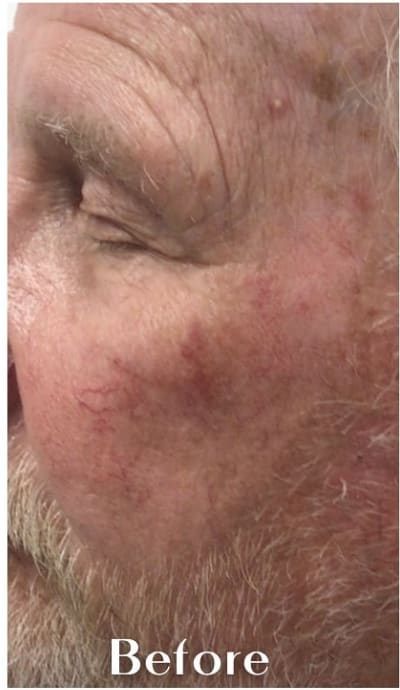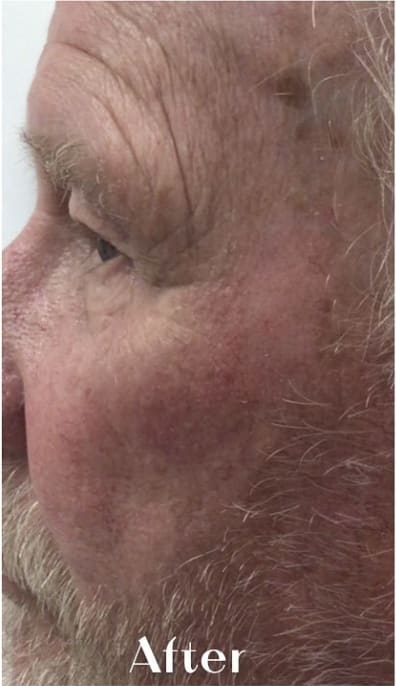
The Skinny
Overview: Vein Function and the Problem of Varicose Veins
Veins are intrinsic to your body’s ability to function. They are small but mighty, and without them, the human body would be unable to survive. Your veins hold the gravity-defying task of carrying blood from your body’s tissues directly to your heart. If your veins become damaged or grow weak, blood is unable to flow freely, which causes blockages in your veins. Once this happens, your veins swell, and you run the risk of developing varicose veins or spider veins.
According to the National Heart, Lung, and Blood Institute, varicose veins and spider veins can develop for several reasons including genetics, age, gender, weight gain, leg trauma, lack of movement, and pregnancy, although their exact cause is yet to be determined. While they aren’t always a major concern and usually do not indicate serious underlying medical conditions, varicose and spider veins can sometimes cause a great deal of pain, blood clotting, the development of skin ulcers, and other medical concerns. Because of their potential to cause medical problems and the critical need for healthy veins for proper blood flow, it is important that you seek the advice of your doctor to treat your varicose veins and spider veins. Their recommendations will vary according to the severity of your vein concerns.
In addition to lifestyle changes, this article will discuss sclerotherapy, ambulatory phlebectomy, radiofrequency occlusion for varicose veins, endovenous laser treatment, and ligation and stripping. Understanding varicose veins and spider veins, as well as the treatment options available, will give you the tools you need to begin correcting and monitoring these conditions before they become a critical problem.
AEDIT
Before & After Images by Provider












Before & After Images by Provider
Vein Treatment Solutions
The Specifics
Varicose Veins vs. Spider Veins
The U.S. Department of Health and Human Services defines varicose veins as being twisted veins. They can be blue, red, or skin-colored in appearance, and may have a ropelike or bulging look, especially if a larger vein is affected. Spider veins, on the other hand, do not have a bulging effect and are much smaller. They are often red or blue and threadlike in appearance, most often mimicking the look of spider webs or tree branches. Although the exact reason is unknown, it is more common for women to develop varicose and spider veins that it is for men to develop them.
How Much Does a Vein Treatment Cost?
The cost of your vein treatment is unique to both your specific procedure type, as well as the variables that tie into your treatment plan. The American Society of Plastic Surgeons reported the average cost of spider vein treatments to be $322 in 2017. This is the base cost for the treatment itself before factoring in fees such as additional treatments, anesthesia, and facility fees. Similarly, the initial cost of varicose vein treatments can fluctuate between $600 - $5,000, depending on the type of treatment used and other related costs.
Additional costs for your vein treatment depends on factors such as the procedure type, the surgeon fees, the location where the procedure takes place, the type of anesthesia that will be used, and the geographical area in which you live. The type of insurance coverage you have will factor into the price of the procedure. Insurance companies may cover medically necessary vein treatments, but keep in mind they may not offer any coverage for the cosmetic treatment of spider veins. Your surgeon’s office may offer payment plans or incentives based on the number of treatments you receive as well. Check with your provider to see if they are running promotions or have financing options available.
How Long Does it Take to Recover from a Vein Treatment?
Length of recovery time will vary after vein treatment. A sclerotherapy treatment may require a week at most, while a ligation and stripping procedure might require up to 4 weeks of healing. The majority of vein treatments allow patients to return to work and non-strenuous daily activities only 24-hours after treatment. Some procedures, such as laser treatment for varicose veins may require an additional few days of rest.
To encourage healing, stop any smoking or alcohol habits for at least 1 week before and after surgery, regardless of the treatment method. These can interfere with proper blood flow and cause increased bruising. It is also advisable to stop taking any blood-thinning medications during this time as well. These things all hurt the way you recover and could mean that some of the side effects from treatment, such as bruising, swelling, tingling, tightness, or redness around your incision sites might linger longer than necessary. Assuming you undergo a normal treatment and recovery, you are realistically looking at between 1-4 weeks for complete recovery from your procedure.
What to Expect Before and After a Vein Treatment
Adhering to the suggested pre- and post-treatment guidelines of a vein procedure will ultimately result in the best possible patient outcomes. It is suggested that beginning 1 week before treatment, you stop smoking, avoid drinking alcohol, and discontinue the use of any blood thinning medications. Known blood thinners include Aspirin®, Heparin, and Warfarin. It is also recommended that you continue following these suggested guidelines for 1 week following your procedure as well.
In addition to the above recovery guidelines, your surgeon will likely give you a list of things they would like for you to follow. These will include taking daily walks to improve circulation and prevent blood clots, keeping your legs elevated whenever possible, and avoiding submersion in hot water, including baths and hot tubs. Each treatment will require you to wear compression stockings for a certain amount of time after your procedure. This is usually between 1-3 weeks of 24-hour wear followed by an additional 0-4 weeks of daytime wear. Otherwise, you can generally expect to return to work and all other non-strenuous daily activities within 24-hours following treatment.
Treatment of Varicose Veins
While not all varicose veins indicate serious or critical problems, once you realize you have developed them, it would be to your advantage to begin monitoring them. The main goal of treatment is not always to fully eradicate your existing veins, but to prevent future complications while alleviating your current symptoms and improving the overall appearance of your veins.
Lifestyle Changes Once you notice spider or varicose veins beginning to form, you should begin implementing lifestyle changes. Assuming you can and your physical condition allows you to do so, this is the easiest home remedy available. The National Heart, Lung, and Blood Institute cites this intervention as one of the earliest treatment options you can adopt, indicating that taking this proactive step could prevent varicose veins from worsening and prevent new ones from forming. The suggested changes are listed below and are recommended as good practices for everyone to follow to avoid the development or worsening of varicose and spider veins:
Sclerotherapy Sclerotherapy is a simple procedure that can dissolve spider veins almost instantly. This treatment is most often recognized as the standard method of managing spider veins, particularly smaller surface veins. While several treatments may be necessary to achieve your desired results, sclerotherapy allows you to resume your regular activities less than 24-hours post-treatment. It is an in-office procedure that utilizes injections to collapse and dissolve spider veins. These injections are most commonly comprised of hypertonic saline, sodium tetradecyl sulfate, polidocanol, and chromated glycerin.
Sclerotherapy is recommended for the treatment of spider veins and is not ideal for those who are dealing with bulging varicose veins. Its goal is to reduce the appearance of unsightly spider veins, especially those found on the legs. The pros of this method include immediate results, little to no recovery, and quick procedure time. Cons include the potential for multiple treatments and its inability to treat varicose veins.
Side effects include bruising, stinging, swelling, skin discoloration, and redness around the injection sites. You may also develop brown lines or spots that usually last 3-6 months, but have the potential to become permanent.
Ambulatory Phlebectomy for Varicose Veins This is a minimally invasive surgical procedure that permanently removes the varicose vein from the treatment area. If the vein affects the entire leg, your plastic surgeon will begin removing the vein at the ankle and move upwards. Small incisions are made along the way, and it is from these incisions the vascular surgeon will remove the vein and fibroadipose attachments by grasping it with forceps and pulling it out of the leg. The incisions are too small to require stitches; however, incisions will be infused with a solution of a numbing agent and epinephrine to help prevent bleeding.
The goal of Ambulatory Phlebectomy as a varicose vein treatment is to reduce the appearance of bulging, unsightly, sometimes painful varicose veins. It is recommended for those with large, visibly raised or bulging varicose leg veins, and is contraindicated during pregnancy and for those with poor circulation, lymphedema, skin infections, arteriovenous fistulas or blood-clotting defects. The permanent removal of bulging varicose veins is a favorable pro of this procedure while the longer recovery time and the chance of possible recurrence are the cons.
Side effects of ambulatory phlebectomy include edema, bleeding, hematoma formation, scarring, trauma-induced spider veins, recurrence of spider veins if not treated properly, and blisters that can occur due to wound dressings. The less frequent, but more serious side effects include nerve injury with sensory disturbances.
Radiofrequency Occlusion for Varicose Veins Radiofrequency occlusion, also known as radiofrequency ablation or RF, does not remove the vein from the body as does ambulatory phlebotomy or ligation and vein stripping methods, but it can be performed before vein removal surgery and is effective for causing the bulging of varicose veins to disappear. It does this by emitting RF energy into the vein which causes the vein walls to collapse and harden. This closes the vein and prevents further blood flow. Without blood flowing through the vein, the bulging effect vanishes. This is a minimally-invasive and permanent surgical procedure.
This method is more comfortable and comes with less bruising than other methods, however, it is not as effective in treating veins that are larger in diameter. Side effects of this method include bruising, pain, swelling, nerve injuries, superficial thrombophlebitis, a blot clot in a superficial vein, and changes in skin pigmentation. It also carries the risk of vein regrowth, although this is a smaller risk than the others.
Endovenous Laser Treatment for Varicose Veins Endovenous laser ablation (EVLA) is similar to radiofrequency occlusion treatment for varicose veins, but this is the more successful option if you are dealing with larger diameter veins. Endovenous ablation can also be known as endovenous laser therapy (EVLT) and is a minimally-invasive way of collapsing vein walls and preventing blood flow via laser energy transmitted through a catheter. The catheter acts as a guide for the laser fiber as it moves through the length of the vein. This method is sometimes combined with sclerotherapy, which is known for targeting spider veins. The grouping of these two services can completely revitalize your skin tone, texture, and contours.
This method works well with larger veins, vein blowouts, dilated segments, fibrous tissue, calcified areas, and veins with clots. Side effects of this procedure include bruising, pain, swelling, superficial thrombophlebitis (a blood clot in the superficial vein). It also carries the risk of recurrence as the device used during treatment generates a higher likelihood of causing perforations in the vein wall. This may indicate additional treatment in the future.
Ligation and Stripping for Varicose Veins This method requires general anesthesia and is the most invasive treatment option for removing your varicose veins. This minor surgery does, however, completely remove the affected vein. The ligation portion of the surgery focuses on cutting and stitching the vein, while the stripping portion focuses on removing the vein. Ligation and Stripping is a longer surgery that generally requires upwards of 60-90 minutes. Two incisions will be made, one near the groin and one near the knee or ankle, depending on the need. Your affected vein will be removed all at once from one of these two incision points.
The goal of ligation and stripping vein surgery is to lessen the appearance of varicose veins. This method completely removes the affected vein, but it requires general anesthesia, as opposed to local anesthesia, and is one of the most invasive procedures available for vein treatment.
Side effects of this vein surgery include the possibility of discomfort, bruising, numbness, tingling, infection, blood clots, and irritation of leg nerves.
The options listed above are all helpful in their ways. The best place to start would be to consult a doctor who can assess your veins through a physical exam and give guidance on how to best proceed. It is never a good idea to ignore the development of spider and varicose veins. While they may begin, or even remain, a cosmetic concern, they could also indicate more serious complications. Consulting your doctor is necessary for determining whether or not they are the result of underlying medical conditions. Once you have made this determination, you can proceed with the appropriate methods of treatment.
The Takeaway
Conclusion: Choosing the Best Option for You
The options listed above are all helpful in their ways. The best place to start would be to consult a doctor who can assess your veins through a physical exam and give guidance on how to best proceed. It is never a good idea to ignore the development of spider and varicose veins. While they may begin, or even remain, a cosmetic concern, they could also indicate more serious blood circulation complications. Consulting your doctor is necessary for determining whether or not they are the result of underlying medical conditions. Once you have made this determination, you can proceed with the appropriate methods of treatment.




